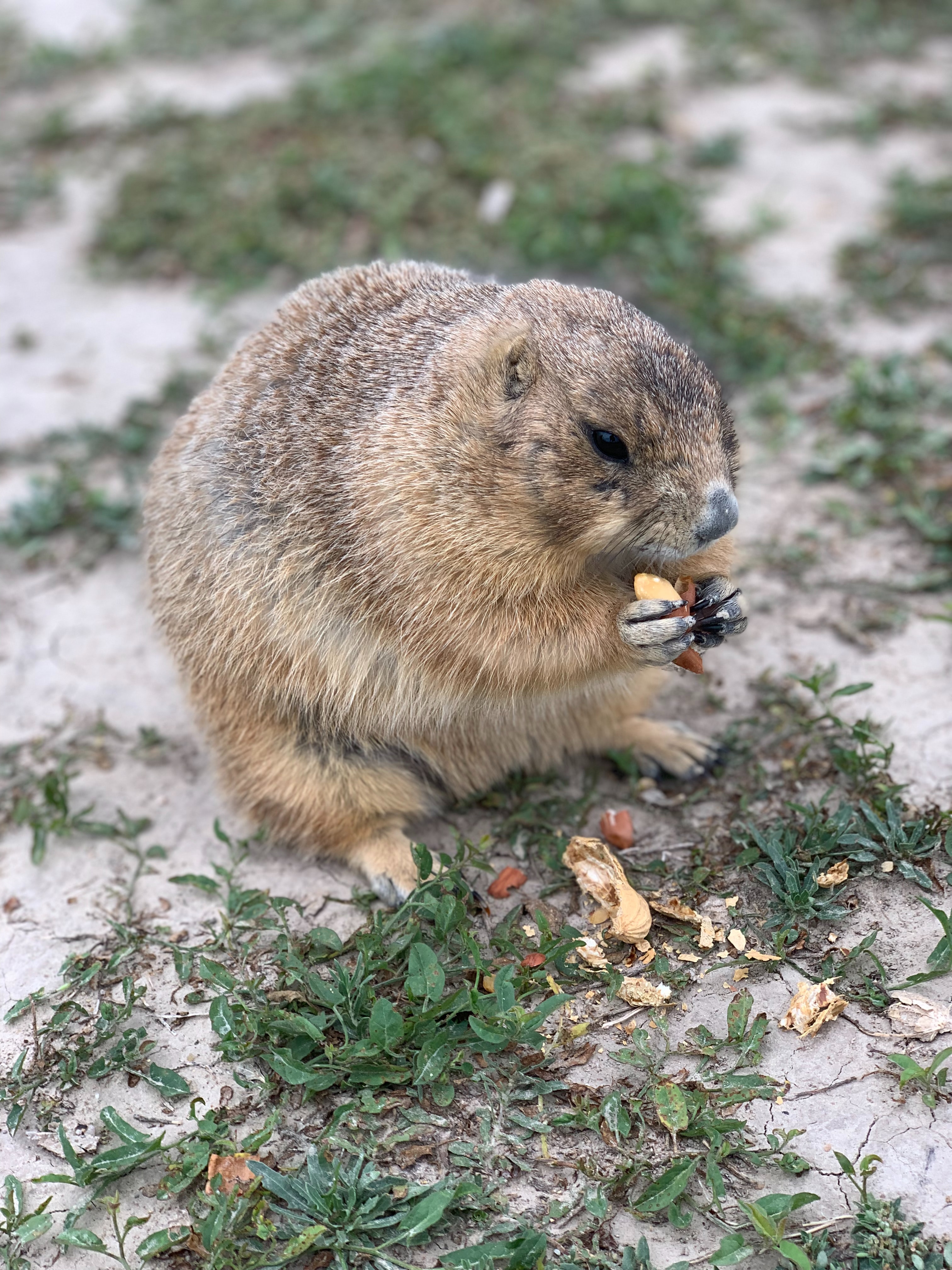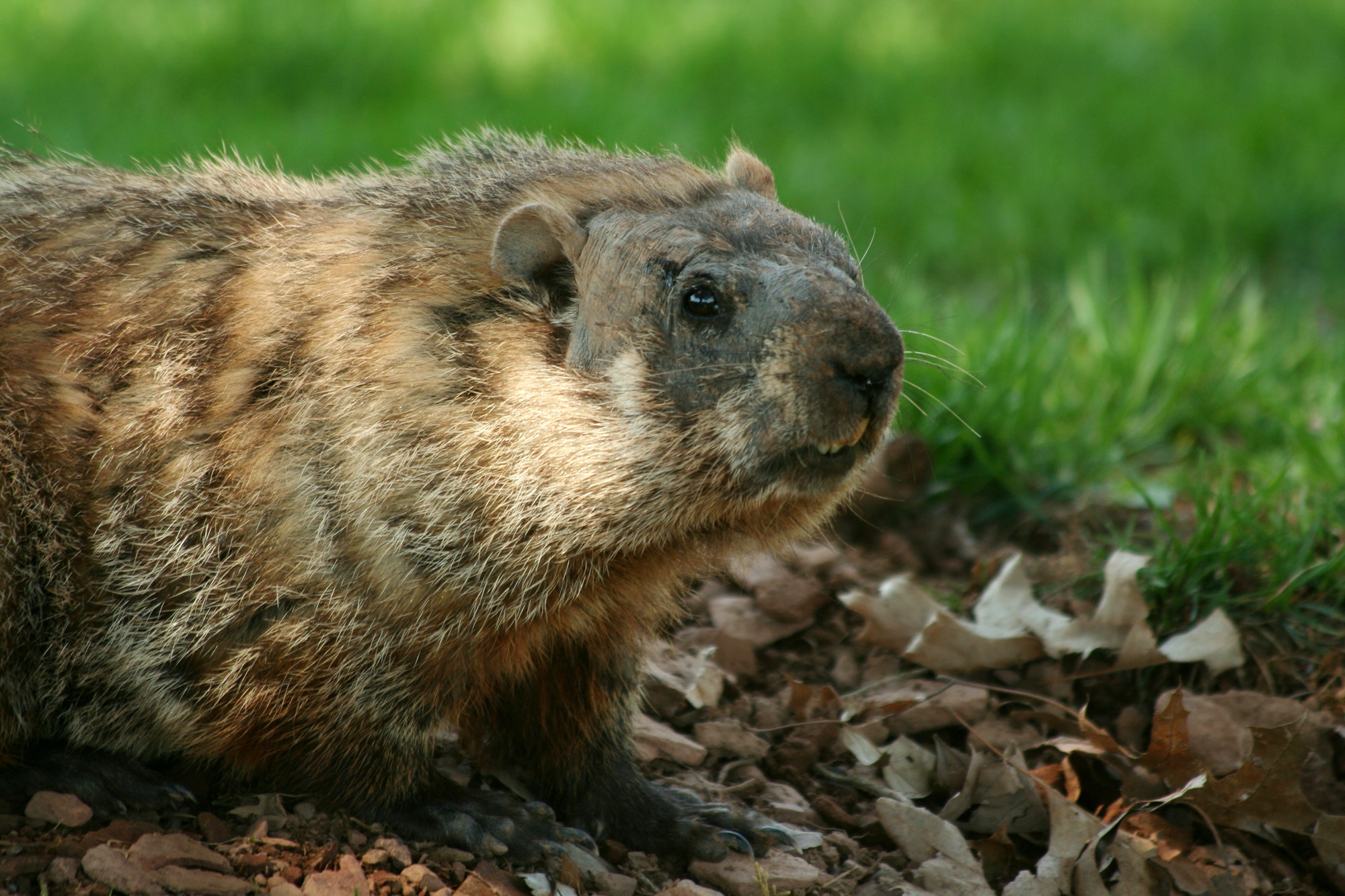What Are Woodchucks?
Woodchucks, also known as Marmota monax or groundhogs, are found throughout most of southern Canada and the eastern U.S. (Mass Aubudon). They are a part of the squirrel family, meaning they are also related to chipmunks, prairie dogs, and marmots (Rajewski, 2019).
These woodchucks have rather short legs, with their bodies from 16 to 20 inches and a tail from 4 to 7 covered in a thick gray-brown fur; the woodchucks also have curved claws suited for digging and burrowing (Pest World). Woodchucks weigh around 13 pounds (National Geographic, 2020).
Woodchucks have a mostly vegetarian diet, which largely consists of berries, grasses, and insects. Foods in their diet include blackberries, raspberries, hickory tree bark, grasshoppers, chickweed, clovers, grasses, and wildflowers (Mass Aubudon).

This type of diet can cause problems for gardeners because the diet of a woodchuck can commonly be found in a garden, so gardeners have developed ways to prevent the destruction of their garden (National Geographic, 2020). Ways that homeowners have prevented the destruction of their property and plants is by using mesh coverings or caulking to block access points or adding fences around a garden (Pest World).
Woodchucks use their sizable claws to dig their homes. These burrows start off in a U-like shape at the entrance; this is how they prevent flooding of their homes (WRL, 2019).
There can be multiple entrances to a burrow, or the woodchuck may have multiple burrows (WRL, 2019). Woodchucks can dig burrows from 8 to 66 feet long for themselves, as they tend to be solitary animals (National Geographic, 2020). In the burrow, there can be separate rooms for different purposes including bathrooms and dens (National Geographic, 2020).
If a woodchuck fills a bathroom, bury the room back in soil, or bring the solid waste to the surface and then bury it (WRL, 2019). Groundhogs revolve within a ½ mile of their burrow, and in the spring and summer prefer open fields and the fall and winter wooded areas, one reason why they may have multiple burrows (WRL, 2019).

The rooms in the burrow that act as a den for hibernation and sleeping can also be used for raising the three to six kits (baby woodchucks) a female will have at a time (WRL, 2019). After coming out of hibernation in late February after living for two years, the mating period for woodchucks lasts about a month; then a month after the kits are born (WRL, 2019).
After about six weeks after their birth, the kits are ready to begin following their mother and leave the burrow for the first time (WRL, 2019). The kits are then weaned and leave the burrow to go off on their own for about 5 to 6 years, and the mother will then prepare for hibernation (Mass Aubudon)
To get ready for their three-month deep hibernation for over five months from around October to February, the woodchuck will begin to put on considerable weight from June to July because of their metabolism slowing (WRL, 2019). In September, the woodchuck will slowly start to sleep until full hibernation (WRL, 2019). Unlike bears, woodchucks are true hibernators with a slowed heart rate and internal body temperature dropping as low as 41℉ (Sirucek, 2020). The woodchucks will then hibernate until mating begins in the spring. However, in February the males will wake up, scout for the female burrows for mating, then hibernate again for a month (National Geographic, 2020).
Author: Kayla Grennes
Purdue University
References
- Mass Aubudon. (n.d.). About Woodchucks. Retrieved October 30, 2020, from https://www.massaudubon.org/learn/nature-wildlife/mammals/woodchucks-groundhogs/about
- National Geographic. (2020, January 31). Groundhog. Retrieved October 30, 2020, from https://www.nationalgeographic.com/animals/mammals/g/groundhog
- Pest World. (n.d.). How to Get Rid of Groundhogs: Woodchuck Facts, Photos, Info. Retrieved October 30, 2020, from https://www.pestworld.org/pest-guide/nuisance-wildlife/groundhogs
- Rajewski, G. (2019, January 28). Five Things You Didn’t Know about Groundhogs. Retrieved October 30, 2020, from https://now.tufts.edu/articles/five-things-you-didn-t-know-about-groundhogs
- Sirucek, S. (2020, January 31). 10 facts you didn’t know about groundhogs. Retrieved October 30, 2020, from https://www.nationalgeographic.com/news/2014/1/groundhogs-day-animals-wildlife
- WRL. (2019, October 14). The Groundhog, Our Underground Architect. Retrieved October 30, 2020, from https://www.wildliferescueleague.org/animals/the-groundhog-our-underground-architect








